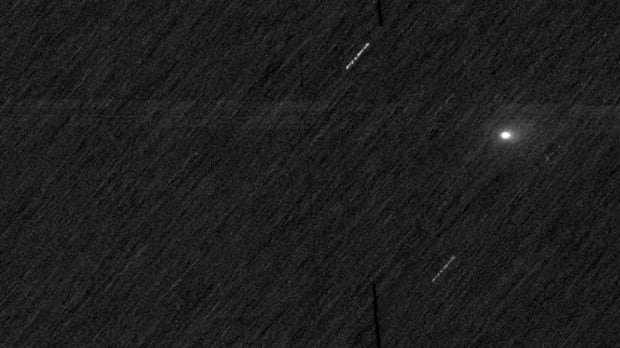An extraterrestrial traveler journeying through our solar system made its closest pass by Mars recently, catching the attention of two European robotic spacecraft in orbit around the red planet.
Dubbed 3I/ATLAS, this alien visitor originates from a distant solar system within the galaxy, likely a comet expelled from its original star’s vicinity, potentially by a gravitational interaction with a massive planet like Jupiter. After drifting through interstellar space for eons, it was captured by the gravitational pull of our sun, now traversing through our solar system before continuing on its solitary voyage, never to return.
Notably, its trajectory suggests that it could be the most ancient comet ever observed, possibly predating our solar system, which is approximately 4.6 billion years old.
Although the object poses no threat to Earth, it passed within 30 million kilometers of Mars on October 3. The European Space Agency’s ExoMars and Mars Express robots, stationed around Mars, captured images of 3I/ATLAS, revealing a hazy spherical shape, known as a coma, with a short tail—a clear indication of a comet releasing ices and dust as they are warmed by the sun.
Subsequent analysis following its closest approach to the sun on October 30 will unveil the composition of these ices and determine if they resemble those of comets orbiting our sun.
This marks the third instance of an interstellar object traversing our solar system, following 1I/Oumuamua in 2017 and 2I/Borisov in 2019. Each appearance triggers speculation about the possibility of these objects being alien spacecraft passing through, a concept partly inspired by the science fiction novel “Rendezvous With Rama” by Arthur C. Clarke.
Despite online speculation, there is no evidence indicating that 3I/ATLAS is a spacecraft. Its characteristics—lack of metallic reflection, absence of signals, and emission of ice and dust—do not align with typical spacecraft behavior. Nevertheless, studying this interstellar visitor during its brief visit offers valuable insights into the formation processes occurring not just within our solar system but potentially across the Milky Way.
Looking ahead, the European Space Agency plans to launch the Comet Interceptor mission in 2029, aiming to intercept an unidentified interstellar visitor from a remote location and ancient era, furthering our understanding of these enigmatic celestial travelers.

